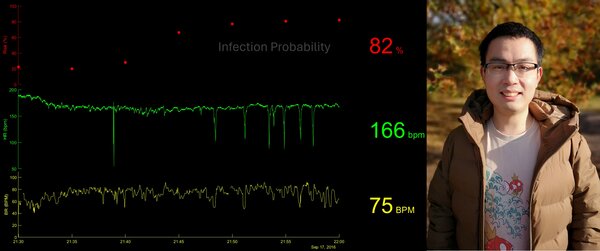

Zheng Peng
Project: PICASSO - Advanced motion monitoring in infants
Movement patterns in preterm infants can offer invaluable insights into their physiological development, including maturation progress, identification of pathological conditions, and understanding of sleep patterns. These patterns can serve as early indicators for conditions such as cerebral palsy, sepsis, and epilepsy. Despite the critical importance of movement assessment, current clinical practices lack continuous monitoring capabilities, limiting the clinical use of movement information. Acknowledging the dual nature of movement monitoring as both a source of false alarms and a potential vital sign in NICU, our project sets out to explore the transformative potential of continuous movement monitoring in enhancing neonatal care.
In collaboration with TU/e, Maxima Medical Center, and industry leaders such as Philips Research, our interdisciplinary team aims to bridge this gap by developing unobtrusive technologies for precise movement monitoring in preterm infants within NICUs. By leveraging the expertise and resources from university, hospital, and industry partners, we aim to pioneer advanced predictive monitoring systems with a primary focus on late-onset sepsis that integrate movement information with traditional vital signs, propelling neonatal care to new heights. This collaboration ensures a comprehensive approach, bringing together diverse perspectives and cutting-edge technology to revolutionize neonatal care and improve outcomes for the most vulnerable patients.

Robin Willems
Project: COMBAT-VT - Computational-model-based decision support for patients at risk for sustained ventricular tachycardias
Monitoring the cardiac function of patients susceptible to ventricular tachycardia often relies on non-invasive vital measurements like electrocardiograms and low-resolution echocardiograms. This data can be augmented with three-dimensional (3D) numerical modeling to aid in treatment-risk assessment. However, current high-fidelity numerical models require high-resolution medical images, which aren't always feasible.
In this study, we introduce a new workflow that transforms a limited number of 2D echocardiogram images of varying quality into analysis-ready left-ventricle geometries for isogeometric analysis (IGA). This allows clinicians to examine a 3D ventricle and optionally conduct cardiac simulations before invasive treatment, all without altering the current imaging process in the clinic.
We benchmarked this workflow using population-averaged imaging data and applied it to patient data obtained from the Catharina hospital as part of the eMTIC program. Our framework is shown to be more efficient than existing methods in the literature, making a step toward a clinically integrated decision tool.

Sujithra Raviselvam
Project: MEDICAID - Data-enabled Design
The Data-enabled Design (DED) is a situated design approach developed under the joint supervision of TU/e and Philips. My postdoctoral research is fueled by various projects investigating different aspects of DED within the e/MTIC ecosystem, involving professionals from TU/e, Catharina Hospital, and Philips. This ecosystem enables our team to gain knowledge from the contributions and difficulties encountered from applying DED in healthcare and helps us shape the methodological concreteness of the approach. Apart from using data as creative material, DED also uses data as a tool to facilitate meaningful conversations between different stakeholders. The projects within e/MTIC highlight the critical role of everyday data in bridging the gap between patients, healthcare professionals, and designers. To broaden the application of DED, my team and I compare the results from the healthcare domain with those of the academic projects within TU/e. We have developed the guiding principles that highlight the distinctive qualities of DED, and our goal is to make it a methodology adaptable to various contexts.